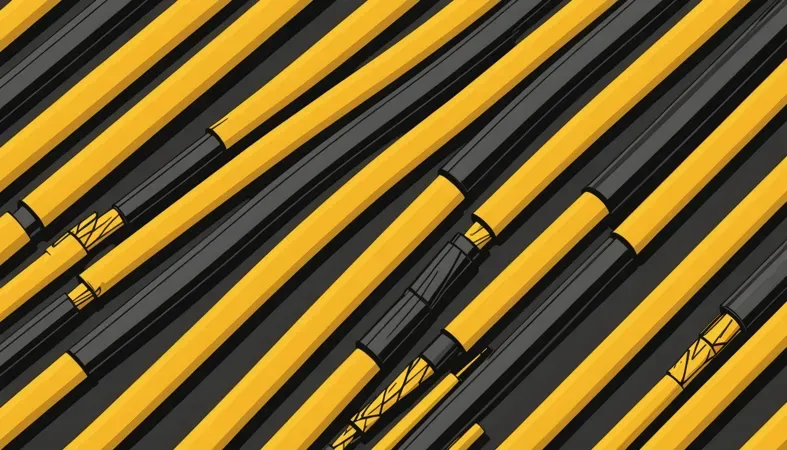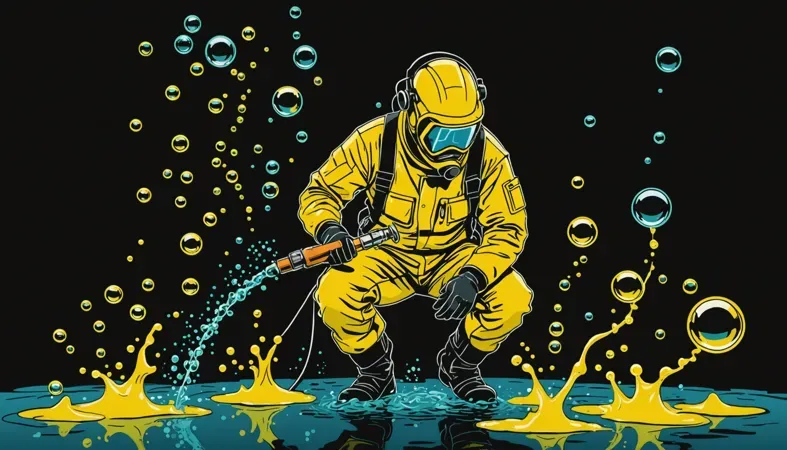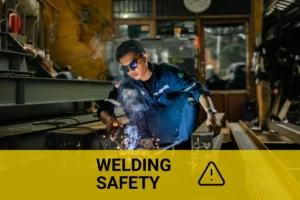What Determines the Size Of a Welding Cable? Factors, Types, and Steps
Published on: April 7, 2025 | Last modified: March 4, 2025
By: Joe Carter
Cable is a type of wire used to carry electrical current. It’s crucial in welding to enable power transfer from the source to the machine.
A question that keeps coming up is what determines the size of a welding cable? Knowing this is important because the wrong size can cause issues like overheating and poor connections. I’ve seen it firsthand, and trust me, it can lead to equipment failure and safety hazards.
In this article, I’ll cover how to determine welding cable size, the types of welding cables, factors influencing cable size, common issues, aftercare, inspection, and even alternatives. You’ll also find answers to questions like what size welding cable for 200 amps and how to measure welding cable size. Let’s dive in!
Contents
- What Determines the Size Of a Welding Cable?
- What Determines the Size?
- Types Of Welding Cables
- Steps to Determine the Size Of a Welding Cable
- Factors Influencing Welding Cable Size
- Voltage Drop Calculation
- Common Issues You Might Encounter
- Use Cases Of Welding Cable Size
- Are There Any Alternatives to Determining Welding Cable Size?
- Frequently Asked Questions (FAQs)
- Conclusion
- Additional Reading
What Determines the Size Of a Welding Cable?
Cable size depends on the current it carries, distance, and duty cycle. Larger sizes handle more amps, reducing heat build-up. Typical applications include MIG and TIG welding, ensuring reliable power and minimal voltage drop.
What Determines the Size?
Cable TV Providers determine the size of a welding cable: ampacity, length, and voltage drop. For instance, a 1/0 welding cable can handle about 150 amps for power transmission over short distances. Typically, you lose about 2% to 3% voltage drop for every 100 feet (30.48 M) of cable, which affects weld quality.
Expert welders examine these factors closely. For 200 amps, a 2- or 3-gauge cable might be required, depending on length and conditions. Guessing the size can hurt performance and safety.
I recommend using a thicker cable for high amperages. For 300 amps, I’d use a 1-gauge cable for better efficiency. Knowing how to measure welding cable size makes a significant difference in your projects.
Types Of Welding Cables
What types of welding cables should you know about?
-
Flexible Welding Cables
Flexible welding cables allow for easy maneuverability and bending. Their size depends on the amperage (Amps) they’re expected to carry. Consider the cable run length and application; a longer run needs a thicker cable, like 2 AWG for high amps (200+ Amps).
In specialized fields, such as aerospace and pharmaceuticals, orbital welding is an advanced technique that uses a mechanized welding process to create precise and high-quality welds in complex piping systems. Discover more about orbital welding processes to understand its significance in such industries.
-
Heavy-duty Welding Cables
Heavy-duty cables are built for demanding environments, ideal for industrial use. Thickness usually reflects the maximum amp capacity. To choose the right size, calculate the total amps and consult a welding cable size chart; often, 1/0 AWG is suitable for 300 amps.
When preparing metal surfaces for welding, it’s crucial to consider the various primers available to ensure strong welds. One option is to understand the benefits of using a weld-through primer.
-
Low-voltage Welding Cables
Low-voltage cables are used in applications under 50 volts. Size mainly depends on the expected current. To find the right size, refer to specifications; a common option is 10 AWG for 30 amps.
-
High-voltage Welding Cables
High-voltage cables are for projects requiring over 600 volts. Size varies based on safety standards and application. To choose wisely, assess the length and use a welding cable calculator; you might need a 4 AWG wire for about 200 amps in this range. Ensuring the longevity of your welding equipment often involves understanding what weld passivation does to prevent corrosion and maintain system integrity.
-
Submersible Welding Cables
Submersible cables are designed for wet environments. Size relates to required durability and electrical flow. To select the correct gauge, examine the amps, run length, and check certification; 6 AWG is often adequate for up to 60 amps underwater.
We covered the different types of welding cables here. Next, we will cover how to determine the appropriate cable size.

Steps to Determine the Size Of a Welding Cable
Now, we’ll cover steps to identify what impacts welding cable size. Follow these steps closely for the best results.
-
Calculate the Ampacity
Start by identifying the amperage for your welding application. A 200-amp operation typically requires at least 4 AWG (American Wire Gauge) wire. For higher currents like 300 amps, you might need to use 2 AWG or even 1/0 AWG. I recommend using a welding cable size chart for accuracy on ampacity versus gauge.
Understanding what constitutes a weld can help ensure you choose the right specifications for your project.
Different types of welding may also affect amp ratings. For example, MIG welding often has higher amperage than TIG welding at the same duty cycle, so consider your welding style when calculating!
-
Consider the Length Of the Cable
Next, measure the total length of your cable run. Longer cables dissipate more voltage, requiring larger conductors. If your cable run exceeds 100 feet (30 Meters), you should go one size larger than what you calculated based on amperage alone. This helps maintain performance by reducing voltage drop.
For instance, if your cable is 200 feet (60 Meters) long and you initially determined 4 AWG, move to 2 AWG to combat voltage drop. It’s a common mistake to underestimate the impact of cable length!
-
Factor in the Duty Cycle
Consider how often you’ll use the welder. A machine with a 60% duty cycle can operate 6 minutes out of every 10. This affects how hot the cable gets. If your machine’s duty cycle is high, you’ll want a thicker cable for heat management—consider moving up one or two sizes.
Keep a close eye on your cable during long runs. An overheated cable can cause permanent damage. Remember, using a thicker cable can extend the lifespan of your equipment.
-
Check Ambient Conditions
If you’re welding outdoors or in extreme conditions, factor those variables in. Higher temperatures increase resistance in the cable, which may require larger sizes. For very hot environments, consider stepping up a gauge from your initial calculation to prevent overheating. Understanding how these variables affect welding can also highlight the impact of undesirable byproducts, such as dross formation in welding.
Conversely, outdoor conditions with low temperatures might allow you to stick with your original size. Understand where and how you’ll be using your equipment, as temperature variances can significantly impact performance!
-
Consider Cable Specifications
Look at the cable specs. Ensure you’re using flexible welding cable that can handle high heat and is properly insulated to prevent issues. For example, silicone-based jackets resist high temperatures better than basic PVC, significantly extending your cable’s lifespan.
Always check the manufacturer’s recommendations, as they may offer guidelines based on their specific cable production. Trust me, I’ve regretted skimping on a good-quality cable in the past!
So far we covered how to determine the appropriate size of a welding cable. Next, let’s look at the factors that affect cable size.
Factors Influencing Welding Cable Size
What factors affect the size of your welding cable? Let’s break it down.
-
Current Carrying Capacity
The current capacity of welding cables is crucial for your setup. Typically, a 1/0 welding cable can handle up to 170 amps. Choose the right gauge to prevent overheating.
-
Cable Length
Cable length affects voltage drop and efficiency. Longer cables increase resistance, so thicker cables may be necessary for runs over 50 feet (15 M).
-
Ambient Temperature
Consider the temperature. In high heat, cable ratings drop; increase the gauge at higher ambient temperatures. For example, a 3/0 cable might not suffice in extreme conditions.
-
Insulation Type
Insulation type influences cable performance. Rubber, PVC, or thermoplastic can handle different temperatures—choose based on your environment to ensure safety.
-
Welding Application
Your welding method affects wire size as well. For MIG welding at 200 amps, a minimum of 2-gauge welding cable is recommended to maintain efficiency and safety.
We have now covered the factors that affect welding cable size. Next, we will examine how to calculate voltage drop.
Voltage Drop Calculation
Understanding voltage drop is crucial for determining welding cable size. Let’s break it down.
Why Voltage Drop Matters
Voltage drop happens when electrical energy dissipates as heat along the cable. A small drop is acceptable, but too much can affect weld quality. Ideally, keep the voltage drop under 3% for efficient operation.
How to Calculate Voltage Drop
Here’s a simple method:
- Identify the Length of the Cable Run: Measure in feet.
- Determine the Amperage: The current your welder uses.
- Use This Formula:
Voltage Drop (VD) = 2 × Length × Amperage × ResistanceResistance for copper wire is typically 0.002 ohms/foot.
Example Calculation
Let’s say you have a 100-foot (30.48 m) run carrying 200 amps:
| Length (ft) | Amperage (A) | Resistance (Ω/ft) | Voltage Drop (V) |
|---|---|---|---|
| 100 | 200 | 0.002 | 0.4 |
The voltage drop would be 0.4 V. For a 240 V system, that’s 0.17%. You’re in a safe zone!
This calculation shows how cable length and amperage directly affect voltage drop. Always calculate to ensure your welding work is efficient. It’s something I wish I had known sooner!
We have now covered voltage drop calculation. Next, we will examine common issues you might encounter.
Common Issues You Might Encounter
Let’s look at some specific problems that can occur with cables.
-
Overheating Of Cables
Cable overheating results from excessive current. Monitor your cable temperature; if it exceeds 60°C (140°F), there’s a problem. To fix it, reduce the load or upgrade to a larger gauge cable.
-
Poor Electrical Connection
Poor connections in cables create resistance. Check for loose connections and corroded terminals. I recommend using high-quality connectors for a solid joint.
-
Inadequate Insulation Rating
If a cable’s insulation rating doesn’t match its application, it can break down. Look for visible cracks and feel for softness. Replace it with a higher-rated cable if needed!
-
Excessive Voltage Drop
Cable length and gauge affect voltage drop. A drop greater than 3% can lead to performance loss. Measure with a multimeter and consider using shorter cables or a thicker gauge.
-
Cable Damage or Wear
Cable damage can occur from bending or abrasion. Inspect for frayed outer layers or exposed wires. Wrap or replace damaged cables to ensure safe operation!
Use Cases Of Welding Cable Size
I know people who use welding cable for heavy-duty tasks, but it has many applications, including:
- Aerospace Manufacturing: Used for lightweight, durable connections, ensuring safety during high-stress operations. This application is popular due to strict weight and reliability regulations.
- Shipbuilding: Essential for large welding projects where currents may exceed 300 amps. This size is favored for its ability to handle substantial loads and durability in marine environments.
- Automotive Repair: Often uses 2/0 gauge (2/0 AWG) cable for high starting current requirements. Mechanics appreciate its efficiency in powering welding machines.
- Pipeline Construction: Typically requires 1/0 gauge (1/0 AWG) cable to handle expansive field needs flexibly, ensuring a stable connection over long distances.

Are There Any Alternatives to Determining Welding Cable Size?
There are several alternatives to figuring out welding cable size. Options like using a welding cable size calculator, such as the one found on websites like WeldWiz, can simplify your decision. Over time, I’ve observed that a simple amperage chart, such as the welding cable size chart PDF, offers quick references for specific uses, which can save valuable time in the field. Understanding the basics of welding processes can enhance your practical knowledge, which you can explore further through arc welding techniques.
Another approach is opting for a more flexible cable, like the Superflex welding cable. It helps reach tight spots without requiring large sizes. Depending on your project, sometimes using more specialized cables can work just as well without delving deep into size determinations.
Frequently Asked Questions (FAQs)
Now let us look at some questions I typically get asked.
How Many Amps is 1/0 Welding Cable Good for?
1/0 welding cable is good for about 150 amps (A). This rating ensures efficient power delivery without overheating, making it reliable for many welding applications. For example, the American Wire Gauge (AWG) system indicates 1/0 can handle continuous loads safely. When selecting a welding process, it’s crucial to understand the implications of different polarities used, such as what DCEP means in welding.
What Size Welding Cable for 200 Amps?
You should use 2/0 welding cable for 200 amps (A). The larger thickness minimizes voltage drop and heat buildup, enhancing performance. Using the right size cable helps maintain optimal operational conditions for welding, which can significantly impact the quality of your work.
What Size Welding Cable for 300 Amps?
For 300 amps (A), a 3/0 welding cable is recommended. It provides more capacity to handle high current levels, ensuring safe welding performance. A mismatched cable can risk overheating, so this sizing is critical for efficient operation and the longevity of your equipment.
What is the Largest Welding Cable Size?
The largest commonly used welding cable size is 4/0. This heavy-duty cable can handle currents up to 400 amps (A), ideal for industrial applications. Proper sizing not only protects your tools but also ensures superior weld quality by maintaining consistent power flow. However, welding tools can offer utility beyond just construction tasks, as they can be applied in various ways such as using a welder to thaw pipes, which demonstrates the versatility of welding equipment.
How Do You Know What Size Welding Wire to Use?
To know what size welding wire to use, consider the amperage of your welder and the type of material being joined. Welding wire should match your machine’s capability and the metal’s thickness for effective welding. Always refer to manufacturer specifications for optimal performance.
What Factors Determine the Size Of Welding Cable Needed for a Job?
Factors determining the size of welding cable include amperage, duty cycle, and length of the cable run. Higher loads require thicker cables to prevent overheating and maintain efficiency. Additionally, longer cable runs increase resistance, so proper sizing is critical to maintain power levels.
Conclusion
That’s everything I wanted to share with you about what determines the size of a welding cable. We covered types of welding cables, steps to determine size, factors influencing cable size, common issues, aftercare, inspection, and use cases. I also addressed alternatives and included FAQs for clarity.
Hopefully, I was able to impart some of my experience on what determines the size of a welding cable. In simpler terms, it boils down to the amp rating, where for example, a 200 amp setup often needs a 2-gauge (AWG) cable while 300 amps may require a 1-gauge or larger. Remember, choosing the right size ensures safety and efficiency in your welding tasks.
For further insights into welding, visit What is Welding.
Additional Reading
- American Welding Society. (2020). AWS A3.0: Standard Welding Terms and Definitions. Miami, FL: AWS.
Joe Carter is a retired welding professional with over 40 years of hands-on experience in the industry, spanning ship repair, structural welding, and even underwater projects. Joe is a master of MIG, TIG, and Stick welding. Passionate about mentoring the next generation of welders, Joe now shares his decades of expertise and practical insights to help others build rewarding careers in welding.
American Welding Society, Cable Types, Electrical Current, Voltage Drop, Welding, Welding Applications, Welding Cable Size, Welding Equipment, Welding Safety, Wire Gauge







